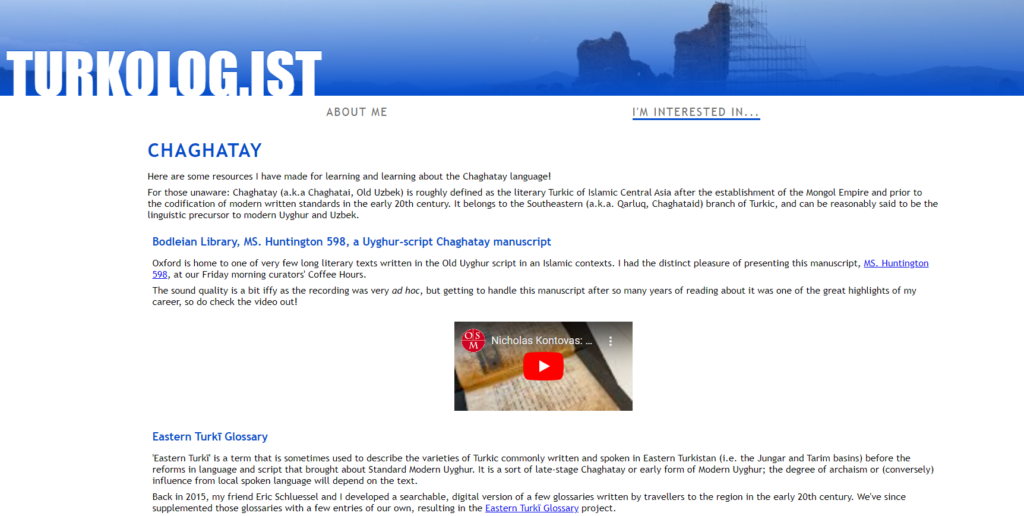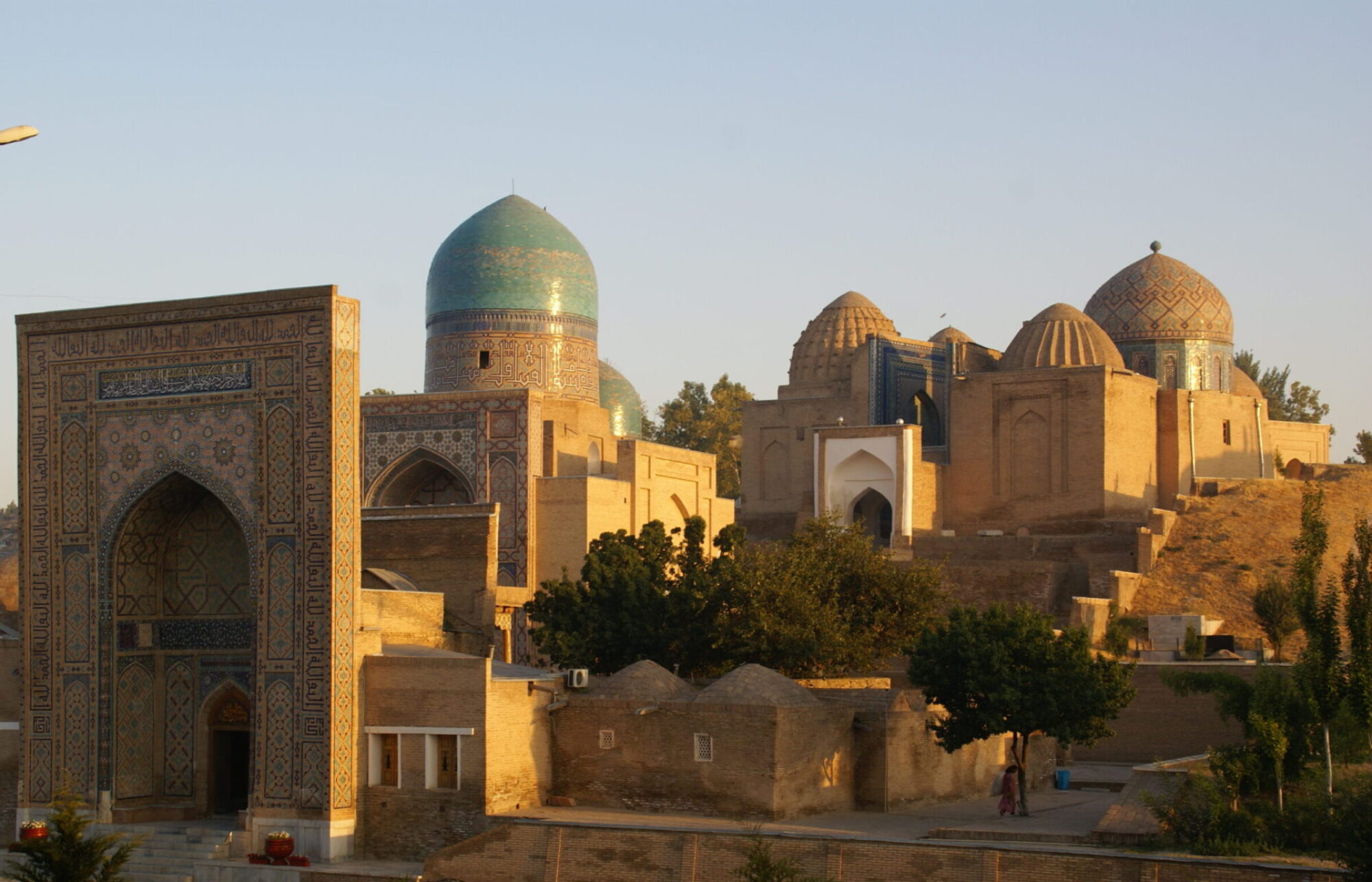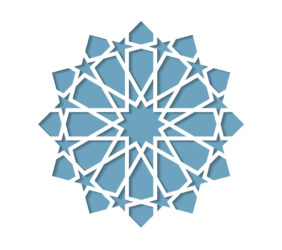It is virtually impossible to describe ‘the languages’ of Central Asia or the area of the Silk Road. In part, this is due to the fact that there is no clear definition of where the Silk Road (or Central Asia for that matter) begins and ends (as we explained elsewhere on this site), nor is it clearly set in time. Even if we focus solely on the period 11th to 15th century, it remains impossible to create an exhaustive overview.
Spoken versus written
In Medieval times under Turco-Persian rule, very broadly we can divide major spoken and literary languages into Persian and Turkic in terms of their origin and structure. In a nutshell there were the sedentary people living in cities and oases that spoke a dialect of Persian and the nomad conquerors from the Steppe that spoke some Turkic language. Once the military Turkic elite started establishing their own courts they strongly leaned on the culture present in the area and adopted Persian as the language for literature and poetry.
However, this is a very simplified version of the in actuality very complicated linguistic landscape. To extend that view a little we should start by distinguishing between spoken and written language. Through manuscripts and documents, we can retrace to an extent which languages were understood by the literate part of society in different eras. Information on spoken languages is much harder to trace, but we can be sure that many different dialects of the various written languages existed. For the literati of the time, there could be stark differences between the languages in which they wrote and the spoken languages which they used in their daily lives. In fact, in some contexts, it would have been the norm, rather than the exception, for an author’s primary written language to belong to a completely different language family than their primary spoken language.
cosmopolitan and isolated
The paradox of the area under study is that it is both isolated and cosmopolitan; the inhospitable landscape dictated that many areas could only feed modest amounts of people, thus limiting population growth and keeping villages or nomadic groups isolated; in terms of spoken language this resulted in many local dialects that lay quite far apart from one another because they developed in semi-isolation.
At the same time, this area was a hotbed of migration, whether in the form of traditional pastoral nomadism, expansive urban trade networks, or mass and forced migration under the shadow of shifting imperial borders. Whatever the auspices, crossing the landscape demanded knowledge of multiple languages to varying degrees, creating environments rife with language contact. For this reason, different linguistic phenomena within Central Asia provide excellent examples of, on the one hand, isolation and divergence, and on the other mixing and convergence.
Language families
The linguistic variety in Central Asia is staggering. The major spoken and literary languages of the region alone encompass at least four completely different language families, depending on how one defines them: Indo-European, Semitic, Turkic and Mongolic, and Sinitic and Tibetan. Central Asia is further rich in terms of the scripts in which these languages have been written over time, with the same language often written in multiple different scripts in different regions or time periods. Most of the Aramaic-derived scripts which have ever existed have appeared here, such as Brahmi, Kharoshthi, Imperial Aramaic, Syriac, Old Uyghur, Manichaean, and Arabic. Latin, Cyrillic, and Greek scripts have also been imported as dominant scripts by various language groups, whereas Chinese characters have been used in historical documents in Buddhist contexts especially.
For the period that this website focusses on, Persian was the language of the elite in Islamic contexts and was used for literature and administration; however, this written version of the language was sometimes far removed from the Persian spoken as a mother tongue by some. Instead, it evolved as a sort of stylized variant of the dialects spoken by the sedentary people of much of the region. From the 10th century CE onward, aside from the literature of some religious minorities (namely Manichaeans and Jews), the Arabic script would be used for writing it. As spoken languages, varieties of Turkic and Persian existed alongside each other. Arabic formed the religious language of a large area and would also be used as a more general lingua franca. If we look, for example, at religious or legal documents, we see that many Arabic words penetrated into even the most remote dialects, far removed from any fluent or native speakers of Arabic.
Turkic languages
In the website section on Literature, you can find some additional information on Persian as a literary language.
For information on Turkic languages, you may want to take a look at Turkolog.ist, a website created by team member Nicholas (Niko) Kontovas. Here, you can find a wealth of information on Turkic, including modern-day varieties and slang, as well as the development of numerous languages within the Turkic language family. The website also gives access to the Eastern Turki Glossary, the only searchable online dictionary for the early modern Central Asian Turkic literary language known as Chaghatay.

Also in the works by Niko is a lexical and morphological database of Medieval Turkic texts from Central Asia, CoMETur: A Corpus of Medieval Eastern Turkic.


